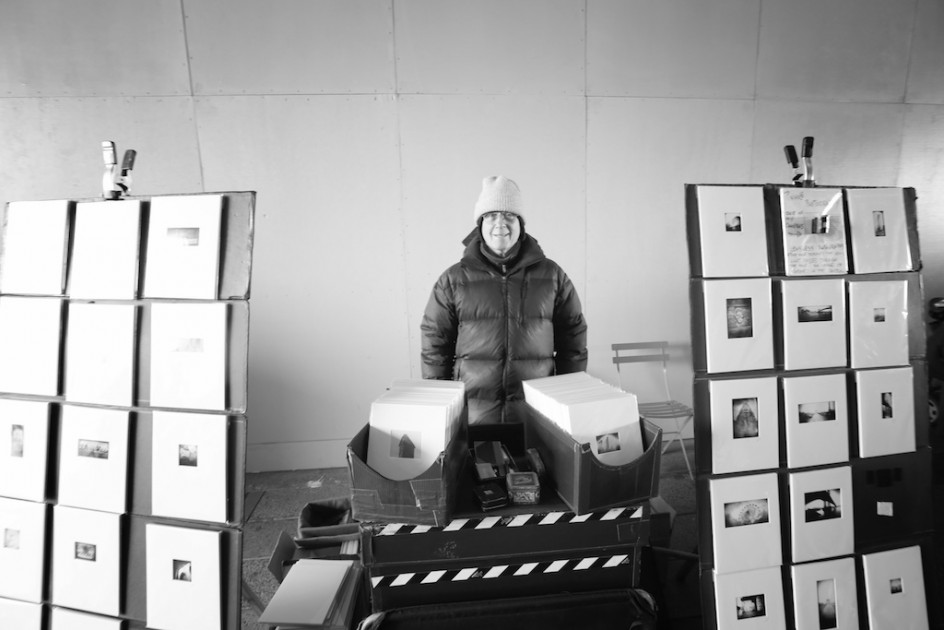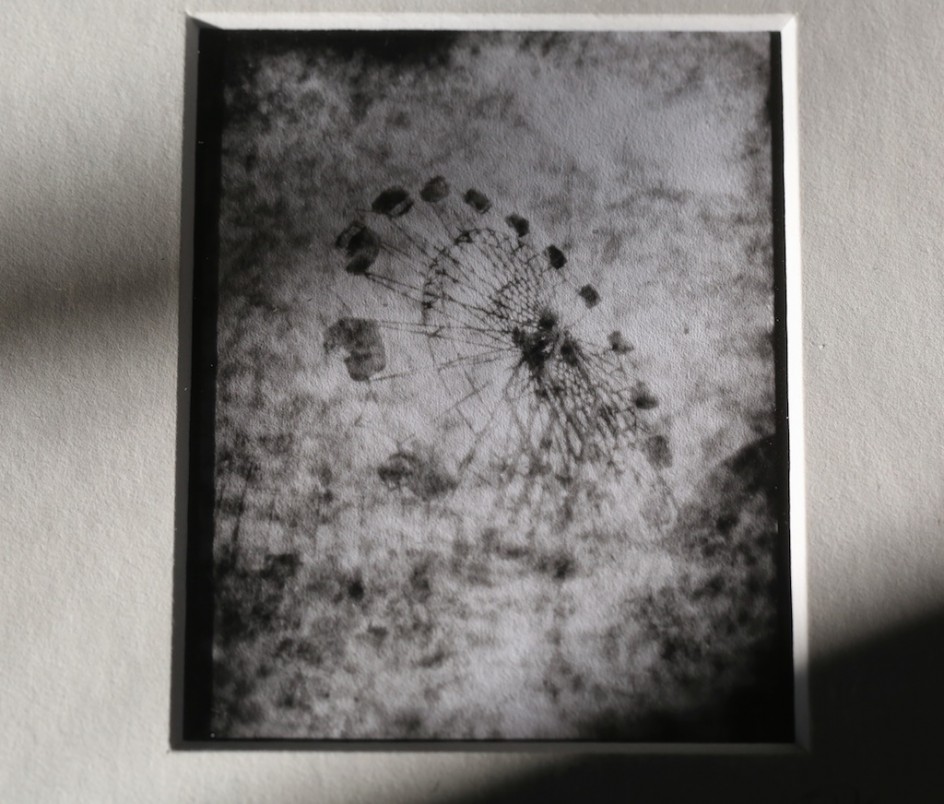It was struck yesterday in New York City by the fact that I had spent the day with Maria walking through museums and art galleries in lower Manhattan, I saw the works of some of the most famous photographers in the world and famed paint and graphic images, many done with ground-breaking and expensive new equipment.
How fascinating that the one image and photograph I saw all day, the one that stuck in my imagination, the one I bought for $20 and brought home, was purchased in the High Line walkway in a tunnel and sold by a photographer who uses 50 cent pinhole camera made of small tin jars.
He has 50 pinhole cameras, and they are just what it sounds like they are: a small tin can with a pinhole punched it, reflecting light and images. His cameras cost him $25. My camera batteries cost more than that.
A pinhole camera is an elemental thing, as there is virtually no technology in it and depends totally on the eye of the photographer.
A pinhole camera is essentially light-proof box with a small hole in one side. Light from a scene outside the box passes through this hole and projects an inverted image onto film on the opposite side of the box or can. Exposures range from a few seconds up to three our four hours.
Pinhole photography is perhaps the oldest form of photography, it was probably the first form. It was invented in 5th Century B.C. in China and has been repeatedly refined over time. Einstein once said if you can’t explain something to a six-year old, you can’t understand it yourself. A pinhole camera can easily explained to a six-year old. I can’t explain my big digital camera to anyone, much as I love it.
The above photo, taken at Coney Island in Brooklyn, is the one I bought. It is of a famous ferris wheel and was one of hundreds of photographs for sale. They constituted an amazing body of work, showing churches, architectural details and evocative scenes of New York that were brilliant in their feeling and conception.
This one is hanging in my study now, it will remain there. It is, to me, a remarkable photograph, the wheel captured at an angle, it seems to rise out of the mists of time, it has a timeless feeling, it is everything a ferris wheel ought to be.
I talked with the artist for a bit, he was a thoughtful and engaging man who showed me one of his tin pinhole cameras and seemed amused at my big black Canon. I have no regrets about owning it, but the message from the artist was very clear. Photography and the very idea of creativity has become something of a Frankenstein monster in its own right.
In a corporate culture, of course, everything worth doing must, by economic necessity become expensive and complicated. Marketers and teachers advance the idea of real photography: jarringly expensive and complex technology that is necessary to capture a beautiful or powerful image.
This photographer loves taking his photos with tin boxes all over New York capturing iconic and evocative images of the city. It doesn’t cost him much, and he earns a living at it. If he loses or damages a camera, he has a closet full. He is free to focus on the image and his feelings about, he is not worried about dials and settings.
He is a happy photographer, pure and free and very much in command of his work. There are lessons there for sure.
I guess I have known for some time that photography is, at heart, simple and intuitive.
The increasingly technological and and technical way in which photography is presented and taught – thirds, settings, computer enhancement programs – has always made me uncomfortable. There are a lot of things i am supposed to think about before I push the shutter, and I try not to think of any of them: if it touches me in the soul, I shoot.
People often ask me what settings I used to take a photograph and the answer is I hardly ever know and don’t much care.
I don’t set up my images in thirds, as one is supposed to do. I do use the Aperture Apple computer enhancement programs and also Nik software from Google. Sometimes they help, and they can stretch my idea of color and feeling. I use them about half of the time. The modern photographer often has an opportunity to fix his mistakes, he or she has a dozen chances to make it right. I don’t like too many thoughts in my head when I take a picture.
I am a devotee of Beavis & Butthead. Because I am stupid, I am free, because I don’t know what to think, I am free to think.
My artist friend has no chances to fix his mistakes, but then, his mistakes have little consequence. He can always get a new set-up for 50 cents. But I take the message of the artist in the tunnel to heart, photography is, at heart, a simple thing, images that touch people and capture feeling or emotion.
The camera sees what I see, and if the image touches me, I hit the shutter. I try not to give it all too much more thought than that.
I do what many people do, I am often drawn into the complexity of our lives. Marketers do not really make life simple or easier, they entice us into buying and wanting things we don’t usually need, and sometimes don’t even want.They keep telling us that our new technologies are making life easier. I think that once was true – electricity and phones and running water made life easier. But I knew few people who feel their lives are easier or better than their parents.
There is a big lie and false promise in there somewhere.
Our world is plunging towards deep trouble if human beings don’t earn how to life more simply and thoughtfully. I am working on this every day in my own life. The pinhole photograph is a great inspiration and lesson for me. He has a lot of wonderful photographs to sell, and he is selling a lot of them.
Life at its purest and most meaning is really very simple. It seems to be in the nature of humans to make it more complicated and get all tangled up in themselves. My new artist friend is a prophet standing there all day in his cold and windy tunnel.
Sometimes, things are much more than what they seem.


